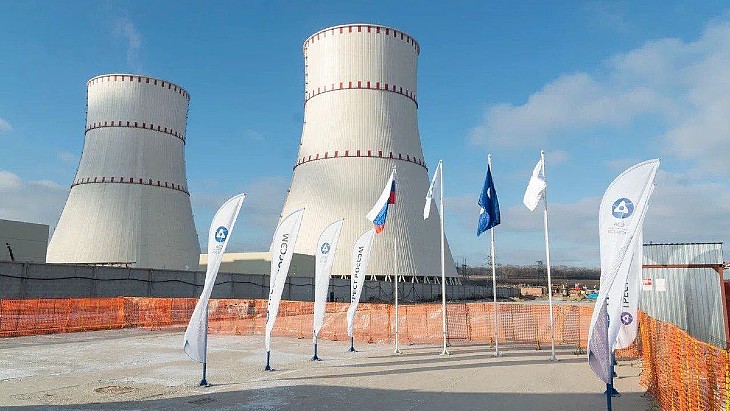IAEA Director General Rafael Mariano Grossi said that although the Ukrainian staff continue to operate the plant, which has been under Russian military control since February, there were now "open contradictions regarding the chain of command" and the decision-making process.
It follows the creation of a Russian state operating organisation for the six-reactor plant and Russia's announcement that it had annexed the plant and the region it sits in - a move Ukraine has rejected. The IAEA says that there has since been an increase in Russian technical staff present at the site, although the Ukrainian staff continue to undertake day-to-day operations "under high and relentless stress".
Four of the plant’s reactors are in cold shutdown, while the two others are in hot shutdown to provide steam for the plant and also heating for people living in nearby Enerhodar, including workers at the plant and their families.
Grossi cited the case last week, when Ukrainian operating staff proposed to start operating reactor unit 6 at low power to provide more steam. Although Ukraine's nuclear regulator approved the move, "the Russian operating organisation did not give its permission on the grounds of the site's unreliable connections to the power grid".
There have been a number of occasions since the conflict began where the Zaporizhzhia plant has lost access to offsite power, and had to rely on its backup emergency diesel generators. The plant sits at the frontline of the conflict, and the two sides have each blamed the other for the damage caused to power supplies and shelling at or near the plant itself.
Another example of the potential operating confusion given by the IAEA was a Russian contractor modifying the physical protection system of the plant's dry used fuel storage facility, which has not been authorised by the Ukrainian regulators. IAEA inspectors visited the facility on Friday and saw that the IAEA seals on the used fuel remained in place and "no immediate safeguards issues were identified".
The IAEA also announced that in the coming weeks safety and security missions will be sent to Ukraine's three other nuclear operating plants as well as to Chernobyl, with each mission lasting about a week. Grossi said "we are doing this important work in close cooperation with - and at the request of - the Ukrainian authorities". He is also continuing efforts to agree with both sides on the details of a safety and security zone around the plant.
IAEA concern over conflicting instructions for Zaporizhzhia staff
Ukrainian staff at the Zaporizhzhia nuclear power plant are now "faced with conflicting instructions on how to run the plant", the International Atomic Energy Agency's director general says, "exacerbating" the pressure they are having to work under and potentially having a "negative impact on nuclear safety and security".





_30199.jpg)
_72306.jpg)

_49562.jpg)





